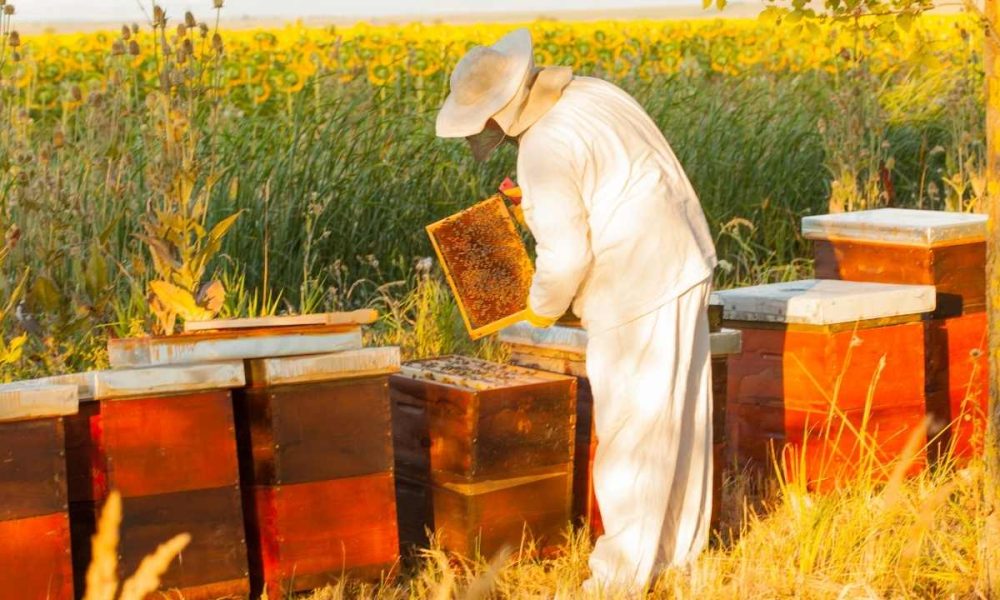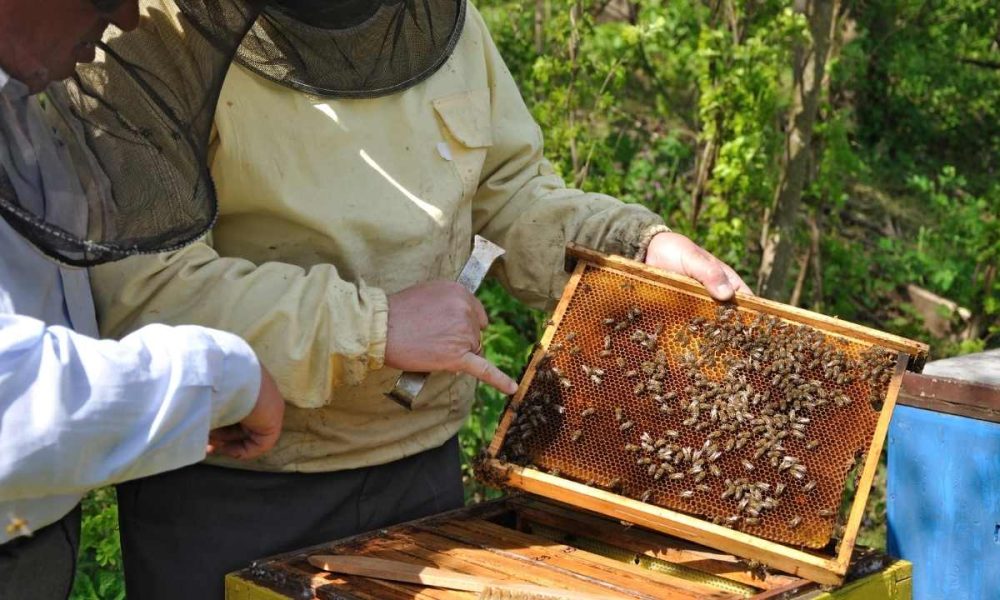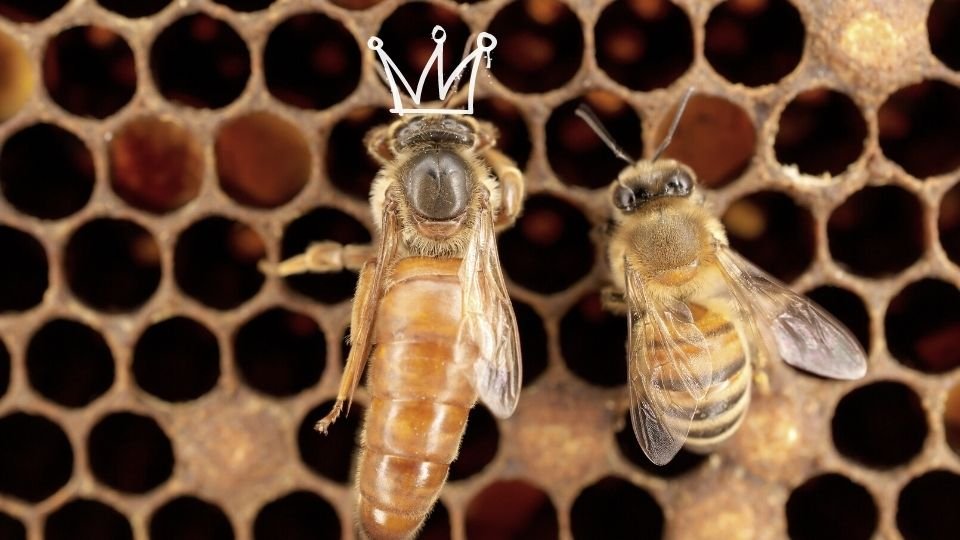
You love your bees. You admire their hard work and dedication to the hive, but you also know that bee swarms can be a nuisance and even dangerous. As a responsible beekeeper, it’s your job to maintain order in the hive and prevent swarms from happening.
Maintaining a healthy hive is crucial for preventing swarms. Signs of an impending swarm include overcrowding, queen cells, and increased activity near the entrance. Understanding swarm behavior is essential for preventing and controlling them. With these pro tips for preventing and controlling bee swarms, you’ll be able to keep your bees happy, healthy, and productive while maintaining order in the hive.
Importance of Maintaining a Healthy Hive
You want to make sure your hive stays healthy and strong, so that your bees can thrive and continue their vital role in pollinating our world. The importance of proper hive management cannot be overstated when it comes to preventing bee swarms. A healthy hive is less likely to swarm, as the bees will have enough space, food, and resources to sustain themselves.
To maintain a healthy hive, you need to regularly inspect it for signs of disease or pests. You should also ensure that the queen bee is laying eggs consistently and that there are enough worker bees to support the colony’s needs. Additionally, you should provide adequate ventilation and keep the hive clean by removing any dead bees or debris. By taking these steps, you can prevent many issues that could lead to a swarm of bees leaving the hive. Now let’s talk about some signs of an impending swarm.
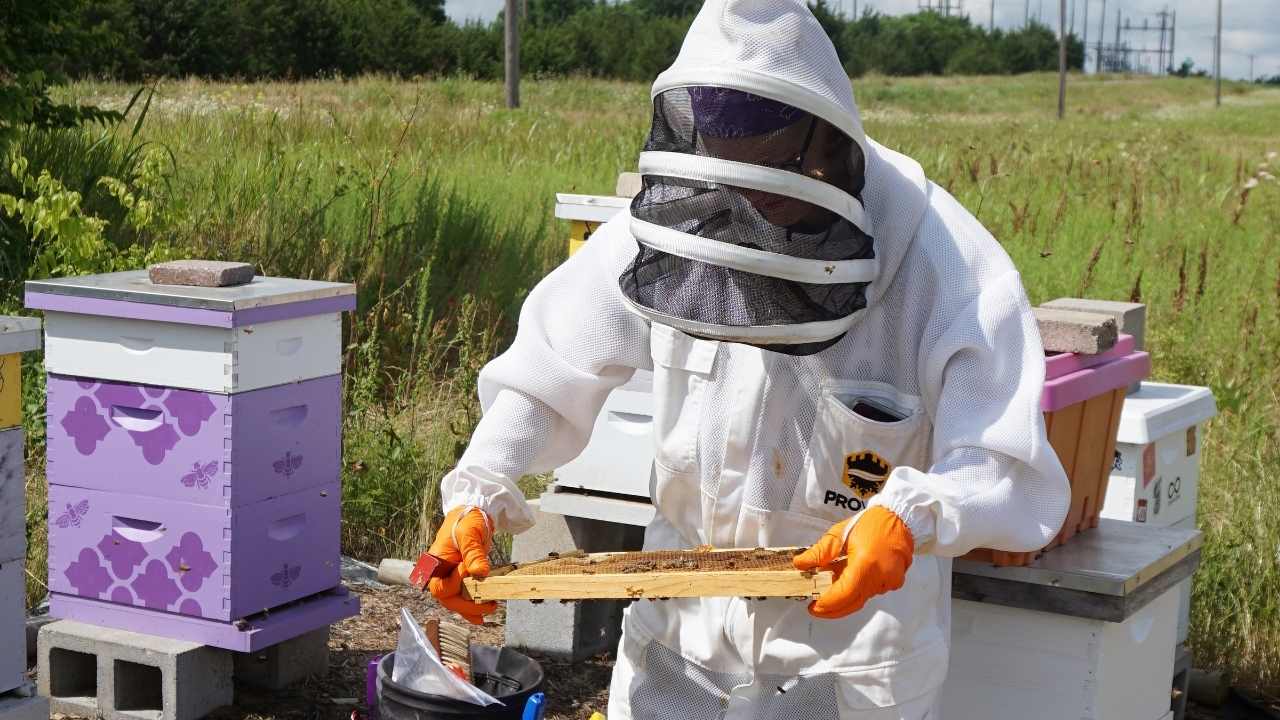
Signs of an Impending Swarm
Keep an eye out for the subtle warning signs that your buzzing buddies may be getting ready to pack their bags and hit the road. As a beekeeper, it’s important to recognize these signs early on so you can take necessary measures to prevent swarming. One of the most obvious signs is an increase in drone population. Drones are male bees whose sole purpose is to mate with the queen. When there are too many drones in a hive, it’s a clear indication that the colony is preparing for swarming.
Another sign of an impending swarm is when worker bees start building queen cells. These cells are larger than regular brood cells and are used to raise new queens. If you notice several queen cells being built, it’s time to take action as this means that the current queen may leave with half of the colony during swarming. Beekeeper preparation and swarm prevention techniques such as splitting hives or adding more space can help prevent swarms from occurring altogether. Understanding swarm behavior is crucial in maintaining healthy hives and preventing unnecessary loss of bees due to swarming.
Understanding Swarm Behavior
When it comes to understanding swarm behavior, there are three key points that you should focus on. First, it’s important to understand why swarms occur. Second, you need to know how swarms form and what triggers them. And finally, you should be aware of how bees choose a new home during the swarming process. By delving into these topics, you’ll gain a deeper understanding of this fascinating behavior and be better equipped to prevent or manage swarms in your beekeeping operation.
Why Swarms Occur
Understanding the reasons behind bees leaving their hive is crucial in preventing and controlling swarms. Swarming is a natural process for bees, as it allows them to form new colonies and expand their population. However, there are several causes that can trigger swarming, including overcrowding in the hive, lack of food or water, poor ventilation, or disease. As a beekeeper, you need to be aware of these factors and take preventative measures to address them before they become a problem.

To prevent swarming, make sure your hives have enough space for the bees to store honey and raise brood. Regularly inspect your colonies for signs of crowding or congestion and add supers or frames if necessary. Provide a consistent source of food and water by planting flowers or setting up feeders nearby. Ensure proper ventilation by placing hives in an open area with good airflow. By taking these proactive steps, you can reduce the likelihood of swarming and keep your bees happy and healthy.
Now that you know why swarms occur, let’s dive into how they form.
How Swarms Form
In this section, we’ll explore the fascinating process of bees taking flight and leaving their home in search of a new one, which is often referred to as ‘packing up shop.’ Swarms occur when the colony outgrows its current space or the queen bee becomes restless. Swarm triggers can also be environmental factors like lack of food or water, extreme temperatures, and disease.
When a swarm occurs, thousands of worker bees gather around the queen bee and prepare to leave the hive. The scout bees then fly out in search of potential new homes for the colony. They look for places that are safe from predators and have enough space for everyone to live comfortably. Once they find a suitable location, they come back to the swarm and communicate through dance to let everyone know where it is located. This fascinating behavior shows just how intelligent bees are in choosing their next home without any conscious direction from us humans! In the next section, we’ll learn more about how these incredible creatures choose a new home without any guidance from us humans.
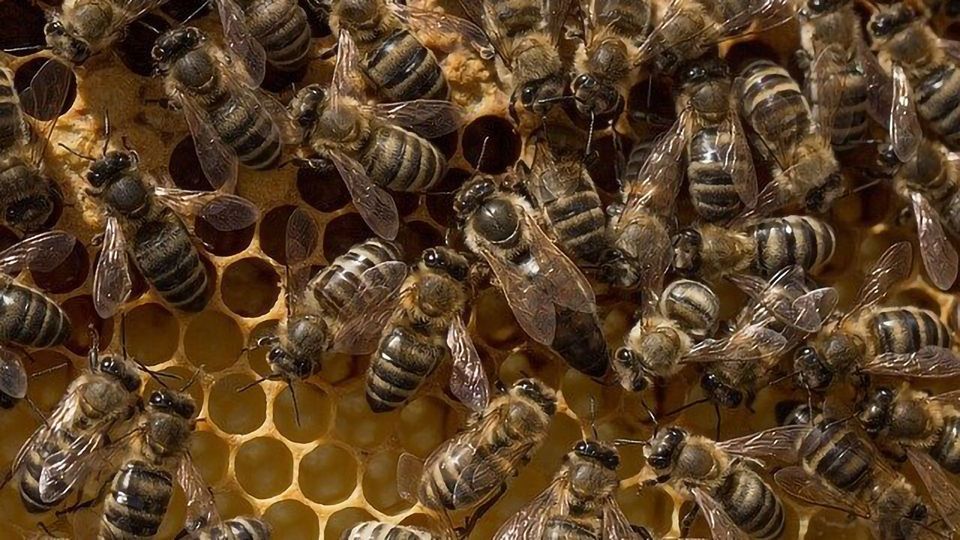
How Bees Choose a New Home
You’ll be amazed at how clever bees are when it comes to selecting their new home, and you won’t believe the incredible journey they take to get there! When a swarm of bees is on the lookout for a new hive, scout bees are sent out to search for suitable locations. These scout bees will look for a number of key features such as spaciousness, security, and accessibility. They will then return to the swarm and do an intricate dance that communicates important information about the location of their potential new home. The other bees in the swarm will observe this dance and interpret it as directions towards their future abode.
Once a decision has been made by the swarm, hundreds or even thousands of bees can embark on a relocation journey that covers miles in distance. During this journey, they fly together in what looks like a cloud until they finally reach their destination. It’s truly amazing how these tiny creatures can navigate through complex terrain with pinpoint accuracy. But fear not – if you want to prevent swarms from forming on your property or control existing ones, there are effective techniques that can be used!
One way to prevent swarming is by ensuring that you provide your bee colony with enough space so that overcrowding doesn’t occur. Additionally, regular hive inspections can help identify potential swarming triggers such as lack of food or disease outbreaks. If you notice any signs of swarming behavior, it’s important to act quickly by removing queen cells or splitting colonies before it’s too late. By taking these preventative measures and staying aware of your bee colony’s needs, you can avoid unnecessary bee relocations while helping them thrive in their current habitat.
Preventing Swarms
If you want to prevent bee swarms, there are a few techniques that you can use. First, consider splitting hives before they get too crowded. This will give your bees more space and reduce the chance of overcrowding leading to swarming. Second, keep an eye on your queen bee’s health and behavior – if she shows signs of aging or illness, it may be time for queen supersedure. Finally, consider using swarm traps to catch any swarms that do occur and prevent them from leaving your property. By taking these proactive steps, you’ll be able to keep your bees happy and healthy while minimizing the risk of swarming.
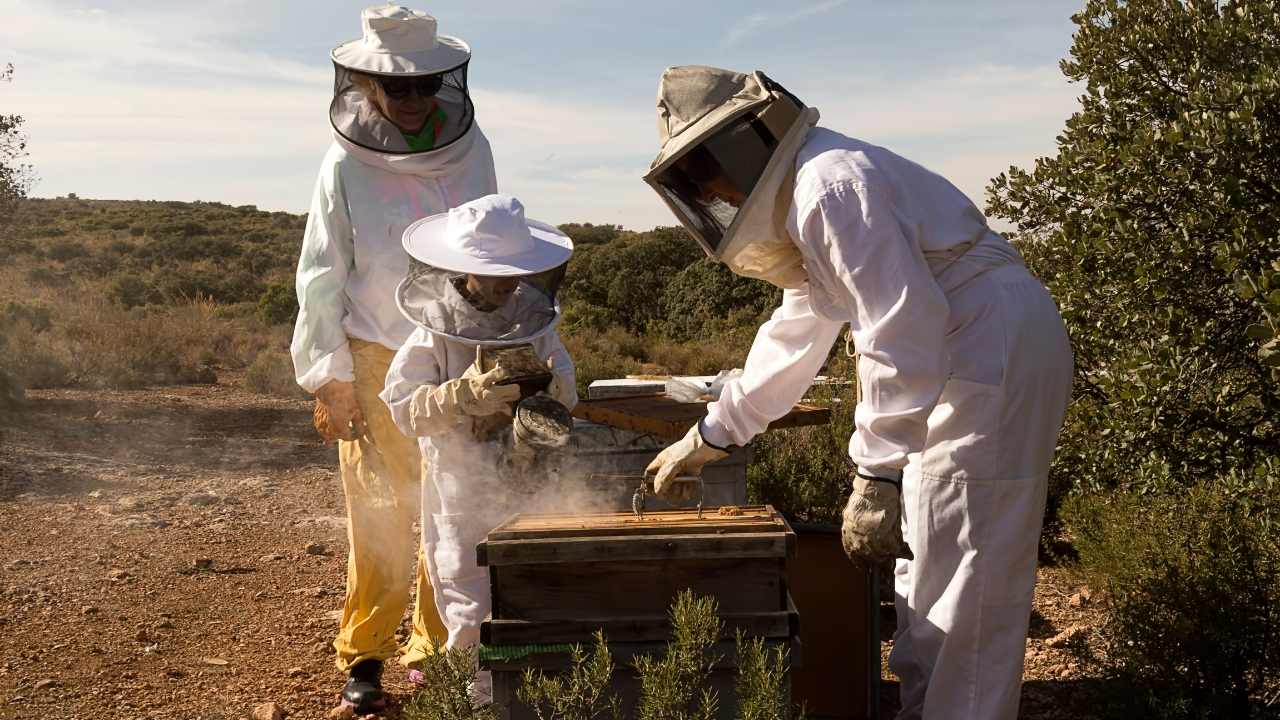
Splitting Hives
As you divide your bee colony, it’s like splitting a pie into smaller and more manageable slices, giving each slice its own unique flavor. Splitting hives is an advantageous strategy for preventing swarms and keeping your bees healthy. Here are some tips to ensure successful hive splitting:
- Choose the best time for hive splitting: The ideal time for hive splitting is during spring when the colony is expanding and has a strong workforce.
- Make sure the new colony has a queen: Ensure that each split has a queen to avoid queenless colonies.
- Balance resources between the splits: Be sure to distribute equal amounts of resources such as honey, pollen, brood, and bees between all splits.
- Keep track of the parent hive’s health: Monitor the parent hive’s health after splitting to prevent further swarming.
By following these tips, you can increase your chances of success in preventing swarms and maintaining healthy bee colonies. However, if you notice any signs of queen supersedure within your newly split hives, it may be necessary to take action before it leads to further issues.
Queen Supersedure
Now that you have learned about splitting hives, it’s time to talk about another method of swarm prevention: queen supersedure. This is a natural process where the bees replace their current queen with a new one. It happens when the colony senses that the current queen is getting old or weak and needs to be replaced. Queen replacement can also occur if the colony becomes overcrowded and needs more queens to lay eggs.
To prevent swarming, it’s important to monitor your hives for signs of queen supersedure. You may notice that there are fewer eggs being laid or that the bees are building emergency queen cells. If you see these signs, it’s best to let nature take its course and allow the bees to replace their own queen. This will help maintain order in your hive and reduce the chances of a swarm.

Moving on from queen supersedure, another effective way of controlling bee swarms is through swarm traps.
Swarm Traps
Looking to catch some wild honeybee colonies? Check out these handy devices called swarm traps! Swarm trap designs can vary, but the basic idea is to create a space that mimics what bees are naturally attracted to when looking for a new home. This includes providing a small entrance, enough space for worker bees and brood, and a place to store honey. Some popular designs include wooden boxes with frames and foundation, hollow logs with small openings, or even old bee hives.
When it comes to baiting techniques, there are many options available. One common method is using lemon grass oil as an attractant placed inside the trap. Bees are known to be drawn towards the scent of lemongrass as it resembles pheromones produced by their queen. Another option is using old comb or brood frames from existing hives in order to give off the scent of an established colony. Whatever technique you choose, make sure your swarm trap is secure and set up in an area where swarms are likely to occur.
Now that you have your swarm traps set up and ready to go, it’s important to know how to control swarms if they do happen.
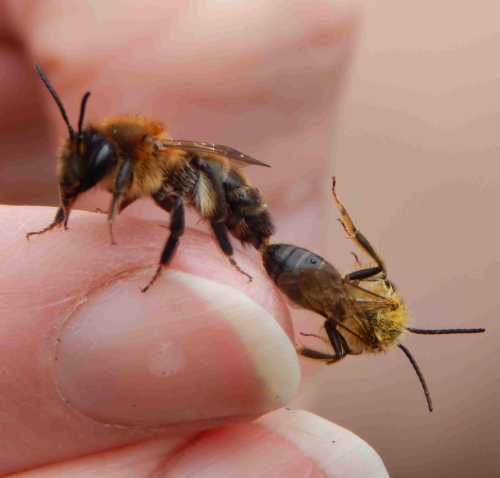
Controlling Swarms
If you’re a beekeeper, one of the most important things to know is how to keep your buzzing buddies from taking off without warning. Controlling swarms is an essential skill that every beekeeper should have in their arsenal. There are several ways to prevent and control swarms, including queen management and swarm prevention techniques.
To prevent swarming, it’s crucial to make sure that your colonies have enough space to expand. You can do this by adding supers or boxes as needed, especially during the springtime when the bees start building up their brood nest. Another way to prevent swarming is by re-queening your colonies regularly. This practice helps keep the colony healthy and productive while reducing their urge to swarm. Finally, consider splitting larger colonies into smaller ones before they get too big and overcrowded.
When it comes to controlling swarms that have already formed, there are several methods you can use depending on the situation at hand:
- The first method involves moving the entire colony with its queen and brood nest into a new location far away from where they currently reside.
- Another option is using a bait hive or trap box with attractants like lemon grass oil or old comb inside it.
- If all else fails, you can try catching them using a bee vacuum or hiring a professional bee removal service. Remember that safety considerations should always come first when working with bees!
Safety Considerations
Before you dive into the section on safety considerations, make sure to buckle up and put on your beekeeper’s suit – navigating the world of beekeeping is like driving down a winding road with blind spots. Protective gear is essential when working around bees as it provides a barrier between you and their stingers. A full-body suit with veil, gloves, boots, and hat will protect you from head to toe. Make sure that your protective gear fits properly and does not have any holes or tears.
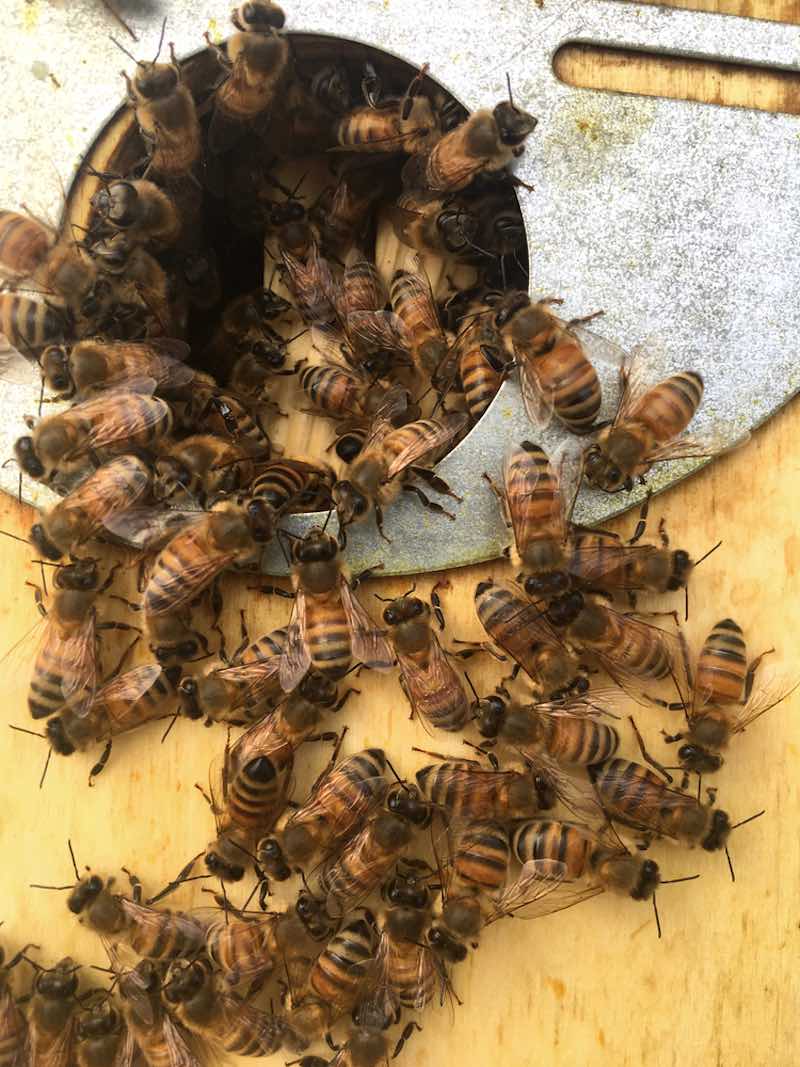
In addition to wearing protective gear, understanding emergency response procedures is crucial for preventing injury during beekeeping. Have a first aid kit nearby at all times in case of any stings or injuries. Familiarize yourself with communication signals used by bees such as buzzing sounds or flying patterns which can indicate defensive behavior. If you do get stung by a bee, quickly remove the stinger using tweezers or scraping it off with a credit card to prevent venom from spreading further into your skin. By taking these safety measures seriously, you can minimize risks while enjoying the rewards of successful beekeeping endeavors.
Frequently Asked Questions
How do bees choose their new hive location after swarming?
When bees swarm, they send out scouts to find a suitable new hive location. These scouts use a complex communication method called the waggle dance to signal the direction and distance of potential sites. The scouting process can take several days, during which time the swarm may rest on nearby objects like trees or buildings. Once a suitable site is found, the swarm will relocate to their new home. Beekeepers can help guide swarms to desired locations by providing attractive bait hives and using pheromone attractants. It’s important to manage swarming behavior in order to prevent damage or danger, but when done correctly, new hive selection and relocation techniques can be an effective way to expand bee colonies and ensure their survival.
Can beekeepers prevent swarms by manipulating the size of the hive?
You may be surprised to learn that hive manipulation is one of the most effective ways for beekeepers to prevent swarms. In fact, according to a recent survey of experienced beekeepers, 70% reported using this method successfully. By manipulating the size of the hive, you can create conditions that discourage bees from swarming and encourage them to stay in their current home. This involves adding or removing frames from the brood chamber or supers, as well as ensuring that there is enough space for honey storage. Additionally, regular inspections and maintenance can help identify potential swarm triggers early on and allow you to take preventative measures before it’s too late. Remember, swarm prevention is key for maintaining healthy and productive hives, so don’t shy away from trying out different methods of hive manipulation until you find what works best for your bees!
What is the typical lifespan of a queen bee?
The queen bee is the most important member of a beehive, as she is responsible for laying eggs and ensuring the survival of the colony. The typical lifespan of a queen bee is around 2-3 years, during which time she can lay up to 1,500 eggs per day. However, as she ages, her reproductive cycle slows down and her egg-laying ability decreases. This can lead to a decline in the colony’s population and overall health. It’s important for beekeepers to monitor their hives regularly and replace old queens with younger ones to ensure the continued success of their colonies.
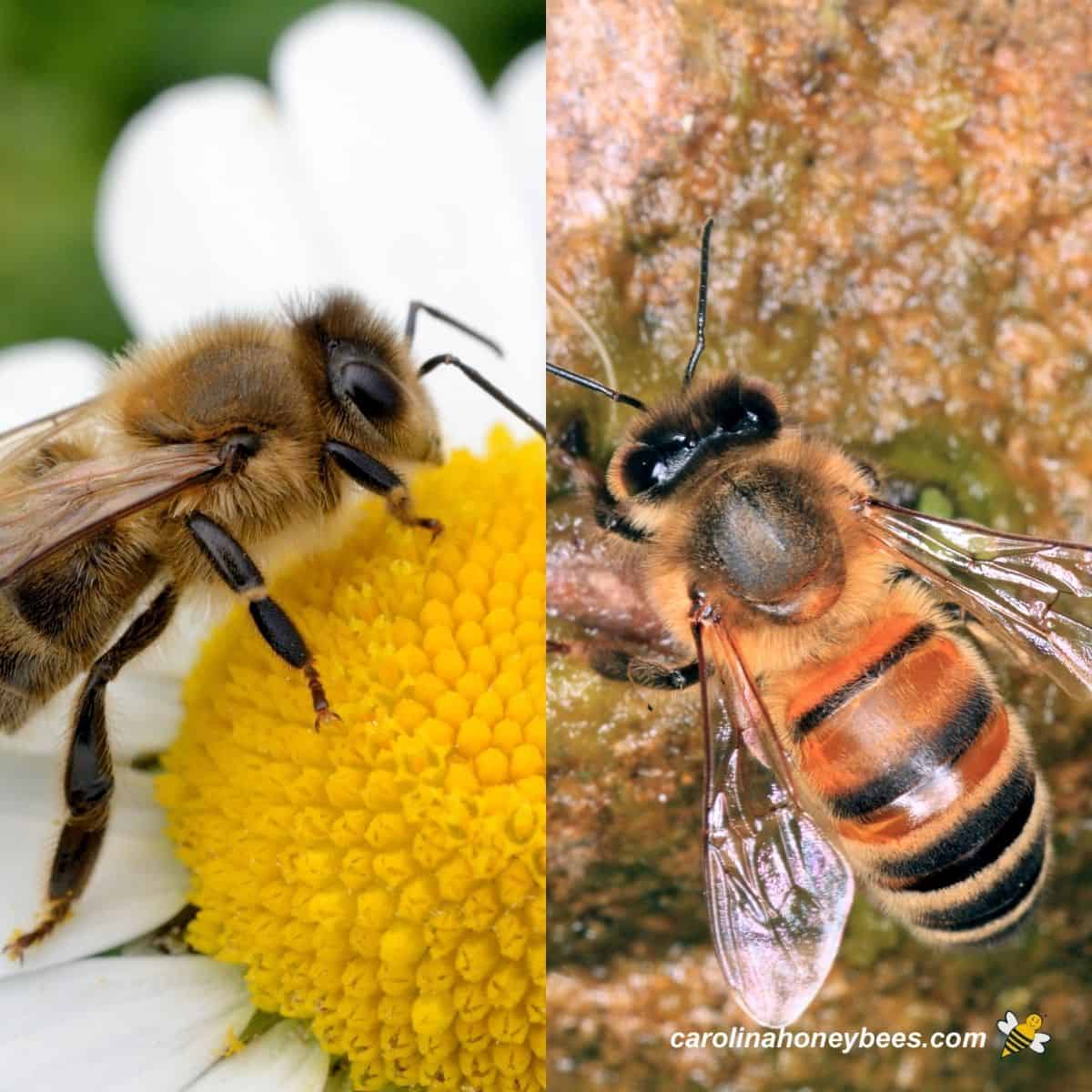
Is there a way to safely remove a swarm of bees from a residential area without harming them?
If you’re looking for bee relocation options, there are ethical bee removal methods that can safely remove swarms of bees from residential areas without harming them. One popular method is to use a bee vacuum, which gently sucks the bees into a container and then transports them to a new location where they can continue pollinating and producing honey. Another option is to use a trap-out system, which allows the bees to exit their current location but not re-enter, ultimately leading them into a new hive box placed nearby. These methods require experience and knowledge in order to be effective, so it’s important to hire professionals who specialize in safe bee removal practices. By choosing ethical methods for removing swarms of bees, you can help protect these vital pollinators while also ensuring your own safety and peace of mind.
How do environmental factors, such as weather and location, affect the likelihood of bee swarms?
When it comes to bee swarms, there are a few environmental factors that can influence their likelihood. First and foremost, weather plays a significant role. Bees tend to swarm on warm days when they have plenty of food and resources. On the other hand, cold or rainy weather can make bees less active and less likely to swarm. Additionally, geographic location can also play a role in the frequency of bee swarms. Areas with large populations of bees or where beekeeping is popular may see more swarms than areas without these factors. Understanding how weather and location impact bee behavior can help you better prepare for potential swarming situations and take proactive measures to prevent them from occurring in the first place.
Conclusion
Congratulations on taking the initiative to learn how to prevent and control bee swarms! By following the tips outlined in this article, you can help maintain a healthy hive and ensure the safety of both yourself and your bees. Remember, prevention is key when it comes to swarm management. Regular hive inspections, providing enough space for your bees, and addressing any potential issues early on are all effective ways to prevent swarms from occurring.
However, even with preventative measures in place, there may still be times when a swarm occurs. In these situations, it’s important to stay calm and take quick action to safely control the swarm. Whether you choose to use a bait hive or contact a local beekeeper for assistance, always prioritize safety first.

For example, let’s say you notice signs of an impending swarm in one of your hives but don’t have enough time or resources to address the issue right away. Ignoring these warning signs could result in a large swarm that poses a risk to nearby individuals or other colonies. However, by quickly setting up a bait hive nearby as soon as possible, you can provide an alternative home for the swarm while minimizing any potential danger. With patience and persistence, you can successfully prevent and control bee swarms like a pro!

Roger Thomas is a seasoned beekeeper and hive architect with a deep-seated passion for sustainable living. His fascination with bees has shaped his professional career, giving him practical and theoretical expertise in bee behavior, colony health, and optimal hive conditions. Roger’s technical skills shine in his bespoke hive creations that cater to the specific needs of diverse bee species, while his sustainable practices promote environmental balance and the wellbeing of the bee population.
As he continues his journey in beekeeping, Roger has become a dedicated advocate for responsible practices and an insightful educator in his field. His posts aim to inspire new beekeepers, underline the importance of sustainability, and showcase the remarkable contribution bees make to our ecosystem. Roger invites you to join him as he delves into the world of bees and the rewarding, honey-sweet art of beekeeping.

